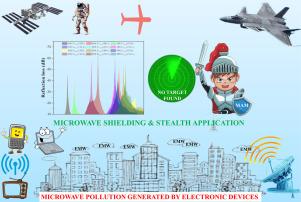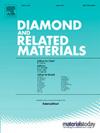Fabrication of polydopamine doped helical/chiral porous carbon fiber (HPCFs@PDA) and N-doped carbon layers (HPCFs@NCLs) for their application as wave absorber with ultrawide EAB
IF 4.3
3区 材料科学
Q2 MATERIALS SCIENCE, COATINGS & FILMS
引用次数: 0
Abstract
A new class of wave absorbing materials HPCFst@PDA and HPCFst@NCLs (where HPCFs describes helical/chiral porous carbon fiber, t refers to carbonization 700, 800 °C, PDA ascribed to poly (dopamine), and NCLs corresponds to nitrogen doped carbon layers) with helical/chiral, hierarchical, multi-layered structural morphology containing different heterostructures was triumphantly constructed through single-step carbonization of HPCFst. The HPCFst biomass fiber was go through self-polymerization of dopamine and we get HPCFs700@PDA, HPCFs800@PDA as an intermediate product. Finally, the PDA doped HPCFs biomass (HPCFs700@PDA, HPCFs800@PDA) was effectively transformed into NCLs from inside toward outside (HPCFs700@NCLs, HPCFs800@NCLs) through carbonization. Notably, HPCFs exhibit helical/chiral, hierarchical porous morphology with hetero-interfaces (such as dipole interfaces) that improve dielectric loss, while PDA and NCLs ameliorate wave absorber conductivity, through generation of polarization centers, heterointerfaces and resulting in considerable dielectric loss. Moreover, HPCFs with such unique structural morphology provide additional loss mechanism through cross-polarization that improve dissipation/attenuation of microwave. The microwave absorption mechanism of HPCFst@PDA(1–3), HPCFst@NCLs(1–3) (where 1, 2, 3 refer to filler content 27.50, 30.00, 32.50%wt PDA derived absorber and 20.00, 22.50, 25.00%wt NCLs filler) and their structure active relationship are further elucidated. Evidently, HPCFs700@PDA2 gained reflection loss (RL) of −51.60 dB at 13.60 GHz, across the broad spectrum of frequencies (EAB, RL ≤ −10 dB) covers 6.70 GHz (11.30–18.00 GHz) at 2.70 mm thickness. The EAB ameliorate to the value of 7.20 GHz (10.70–18.00 GHz) at thickness of 2.80 mm. While HPCFs700@NCLs2 RL was improved to −63.00 dB at 2.40 mm thickness with EAB 5.10 GHz (11.40–16.50) at 13.30 GHz frequency. Likewise, HPCFs800@PDA2 RL elevates to the value of −53.40 dB with adequate EAB covering 12.80–18.00 GHz (5.20 GHz) at higher values of 14.40 GHz and 2.10 mm thickness. For HPCFs800@NCLs2, the RL is as high as −65.40 dB at 9.90 GHz, with an effective thickness of 3.20 mm covering 7.50–11.20 GHz (3.20 GHz) EAB. At matching thickness of 2.00 mm the EAB covers 13.80–18.00 (4.20 GHz). Their top-notch microwave absorption capabilities with widened EAB at lower matching thickness demonstrate potentially promising prospects of HPCFst@PDA and HPCFst@NCLs as wave absorbing materials.

掺杂多巴胺的螺旋/手性多孔碳纤维(HPCFs@PDA)和掺杂 N 的碳层(HPCFs@NCLs)的制备及其在超宽 EAB 波吸收器中的应用
通过对HPCFst进行单步碳化,成功构建了一类具有螺旋/手性、分层、多层结构形态的新型吸波材料HPCFst@PDA和HPCFst@NCLs(其中HPCFs指螺旋/手性多孔碳纤维,t指碳化温度700、800 °C,PDA指聚(多巴胺),NCLs指掺氮碳层)。HPCFst 生物质纤维通过多巴胺的自聚合反应得到 HPCFs700@PDA、HPCFs800@PDA 作为中间产物。最后,掺杂了 PDA 的 HPCFs 生物质(HPCFs700@PDA、HPCFs800@PDA)通过碳化作用从内向外有效地转化为 NCLs(HPCFs700@NCLs、HPCFs800@NCLs)。值得注意的是,HPCFs 表现出螺旋/手性、分层多孔形态,具有异质界面(如偶极子界面),可改善介电损耗,而 PDA 和 NCL 则通过产生极化中心、异质界面,改善吸波传导性,从而导致相当大的介电损耗。此外,具有这种独特结构形态的 HPCF 还能通过交叉极化提供额外的损耗机制,从而改善微波的耗散/衰减。本研究进一步阐明了 HPCFst@PDA(1-3)、HPCFst@NCLs(1-3)(其中 1、2、3 指填充物含量分别为 27.50、30.00、32.50%wt 的 PDA 衍生吸收剂和 20.00、22.50、25.00%wt 的 NCLs 填充物)的微波吸收机制及其结构活性关系。显而易见,HPCFs700@PDA2 在 13.60 GHz 时的反射损耗(RL)为 -51.60 dB,在厚度为 2.70 mm 的情况下,在覆盖 6.70 GHz (11.30-18.00 GHz) 的宽频谱上(EAB,RL ≤ -10 dB)。在厚度为 2.80 毫米时,EAB 的频率值为 7.20 千兆赫(10.70-18.00 千兆赫)。而 HPCFs700@NCLs2 的 RL 在厚度为 2.40 mm 时提高到 -63.00 dB,EAB 为 5.10 GHz(11.40-16.50),频率为 13.30 GHz。同样,在 14.40 GHz 和 2.10 mm 厚度的较高频率下,HPCFs800@PDA2 的 RL 升至 -53.40 dB,EAB 为 12.80-18.00 GHz (5.20 GHz)。对于 HPCFs800@NCLs2,9.90 GHz 时的 RL 高达 -65.40 dB,有效厚度为 3.20 mm,EAB 覆盖 7.50-11.20 GHz(3.20 GHz)。匹配厚度为 2.00 mm 时,EAB 的频率为 13.80-18.00(4.20 GHz)。HPCFst@PDA 和 HPCFst@NCLs 具有一流的微波吸收能力,在较低的匹配厚度下具有更宽的 EAB,这表明它们作为吸波材料具有潜在的广阔前景。
本文章由计算机程序翻译,如有差异,请以英文原文为准。
求助全文
约1分钟内获得全文
求助全文
来源期刊

Diamond and Related Materials
工程技术-材料科学:综合
CiteScore
6.00
自引率
14.60%
发文量
702
审稿时长
2.1 months
期刊介绍:
DRM is a leading international journal that publishes new fundamental and applied research on all forms of diamond, the integration of diamond with other advanced materials and development of technologies exploiting diamond. The synthesis, characterization and processing of single crystal diamond, polycrystalline films, nanodiamond powders and heterostructures with other advanced materials are encouraged topics for technical and review articles. In addition to diamond, the journal publishes manuscripts on the synthesis, characterization and application of other related materials including diamond-like carbons, carbon nanotubes, graphene, and boron and carbon nitrides. Articles are sought on the chemical functionalization of diamond and related materials as well as their use in electrochemistry, energy storage and conversion, chemical and biological sensing, imaging, thermal management, photonic and quantum applications, electron emission and electronic devices.
The International Conference on Diamond and Carbon Materials has evolved into the largest and most well attended forum in the field of diamond, providing a forum to showcase the latest results in the science and technology of diamond and other carbon materials such as carbon nanotubes, graphene, and diamond-like carbon. Run annually in association with Diamond and Related Materials the conference provides junior and established researchers the opportunity to exchange the latest results ranging from fundamental physical and chemical concepts to applied research focusing on the next generation carbon-based devices.
 求助内容:
求助内容: 应助结果提醒方式:
应助结果提醒方式:


